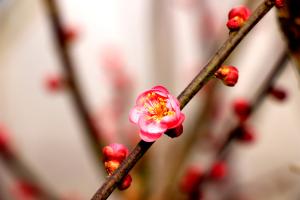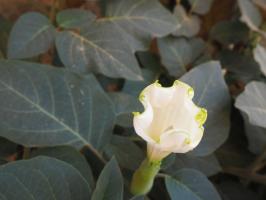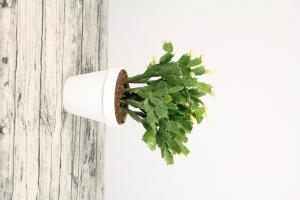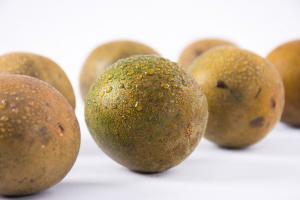Q1. Why should flowers be trimmed
Seven parts of flower cultivation depend on management and three parts depend on cutting "Flower proverb" is an important experience in flower cultivation. Pruning can not only make the flower branches evenly distributed, save nutrients, adjust plant potential and control overgrowth, so as to make the flower plants neat and beautiful, but more importantly, it is conducive to more flowers. Most flowers bloom on new branches. Only by constantly pruning old branches can they promote new branches, more flowers and more fruits. Pruning is generally divided into the following two types:
Pruning and dormancy: 1. It should be carried out when the sap begins to flow and the buds are about to sprout in early spring. Pruning is too early, the wound is not easy to heal, the bud sprouts and the new shoots are easy to be damaged by freezing; Pruning too late, the new shoots have germinated, wasting nutrients

(2) pruning during growth period: it is mainly to regulate vegetative growth, including heart picking, bud wiping, flower thinning, fruit thinning, pruning of bare branches, etc. During the growth period, it should be carried out at any time
Q2. When will ordinary potted flowers be trimmed
Different types of flowers and trees have different pruning time. When pruning flowers and trees that mainly watch flowers, we should first master the flowering habits of different flowers and trees. For spring flowering, such as plum blossom, green peach and jasmine, the flower buds are formed on the branches of the first year. Therefore, it is not suitable to prune in winter and before germination in early spring. Otherwise, the flower branches will be cut off. They should be pruned within 1-2 weeks after flowering to promote the germination of new shoots and form the flower branches of the next year. If you wait until autumn and winter to prune, the branches that have formed flower buds in summer will be damaged and affect the flowering of the next year

All flowers and trees that bloom on the current year's branches, such as rose, Fusang, poinsettia, hibiscus, kumquat, Daidai, bergamot, etc., should be pruned in winter dormancy to promote more new shoots, more flowers and more fruits. Creeping woody flowers should be pruned in dormancy or winter in order to maintain a neat, symmetrical and beautiful plant shape. Flowers and trees that are mainly straight are also mostly pruned during dormancy
Q3. How to pick the heart
Pinching is to pinch (or cut off) the top of the main stem or side branches of flowers with your fingers, promote the germination of axillary buds or inhibit the overgrowth of branches, so as to make the plant grow strong and beautiful and increase the number of flowers

General herbaceous flowers, such as a bunch of red, goldfish grass, five color pepper and Catharanthus roseus, can be toppled when the plant height is about 10 cm after the seedlings are settled and survive, so as to promote their multi branching and multi flowering. Another example is the four seasons Begonia, upside down golden bell, chrysanthemum, etc. after the seedlings are planted and survive, they should be picked to promote multiple lateral branches, rich plant shape and increase the number of flowers. However, for some flowers that make the flowers smaller or unable to bloom after picking the heart, such as Impatiens, cockscomb, jiangxila, it is not suitable to pick the heart

Some woody flowers often topple and pick the heart when changing pots in spring or when the main branches grow vigorously, so as to speed up the formation of branches. For example, pomegranate, rose, plum blossom, poinsettia, leafy flower, night clove, etc. can be topped many times according to the cultivation purpose and plant growth
Q4. How to trim shrubs
Shrubs in gardens can generally be divided into three categories: flowers, fruits and branches. Different pruning methods should be adopted according to different ornamental purposes. Shrubs that mainly watch flowers are common, such as jasmine, forsythia, Rosa Rosa, Bauhinia, clove, etc. their flower buds are formed on the branches of the first year, so pruning should be carried out after flowering in May and June

Pruning in summer is mainly based on thinning and shaping, cutting off Cross branches, bare branches, dense branches, pest branches and dead branches, so as to facilitate ventilation and light transmission and concentrate nutrients; The residual shoots after flowering can be shortened to promote their growth, so as to facilitate more flowering in the coming year

For summer flowering shrubs, such as rose, hibiscus, medlar and crape myrtle, they bloom on the new shoots issued in the spring of that year, so pruning is carried out after falling leaves in winter. Cut off over dense branches, dead branches and branches with diseases and pests. When thinning branches, the residual piles shall not be left too long. Generally, the incision shall be cut at an inclined angle of 45 ° from the branch point, and the incision shall be smooth. The weak branches shall be cut heavily and the strong branches shall be cut lightly. 4-6 buds can be retained on each branch, and the rest shall be cut off
For shrubs that can see both flowers and fruits, such as holly and honeysuckle, properly cut off some dense branches and pest branches after flowering to make them ventilated and transparent for the benefit of fruit. Some shrubs, such as redwood and begonia, can be re cut every winter because they mainly watch their bright young branches. Only 15cm-20cm of the aboveground part is left, and the rest is cut away, so as to promote the germination of more new branches in the coming year

 how many times do yo...
how many times do yo... how many planted tre...
how many planted tre... how many pine trees ...
how many pine trees ... how many pecan trees...
how many pecan trees... how many plants comp...
how many plants comp... how many plants can ...
how many plants can ... how many plants and ...
how many plants and ... how many pepper plan...
how many pepper plan...































